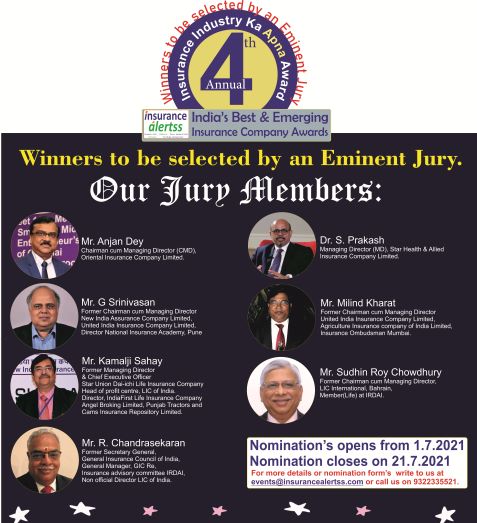 01-07-2021
01-07-2021
Insurance is a "multi-decade opportunity", per HDFC Life

 Insurance Alertss
Insurance AlertssInsurance is a "multi-decade opportunity", per HDFC Life
The insurance industry in India has seen a shift in terms of emerging product preferences, ways of customer engagement, service delivery, operations and processes amongst others, in the wake of COVID-19, says listed insurer HDFC Life in its 2020 annual report.
In a segment on the outlook for the life sector, HDFC Life says that insurance remains a multi-decade opportunity in India. Some of the growth drivers are:
- Changing demographic profile
- Low insurance penetration
- Financialisation of savings
- Digitisation.
Changing demographic profile
India is the second-most populous country in the world with a median age of about 28 years. The life insurance industry helps in mobilisation of long-term savings, provides protection and long-term income and annuity solutions. Each of these segments has different demand drivers and India’s changing demographic profile bodes well for the industry's future growth.
The proportion of the insurable population (people between the ages of 20 and 64) is expected to reach almost 1bn by 2035, thus outlining the need for long-term savings and protection plans.
Low insurance penetration
India remains vastly underinsured, both in terms of penetration and density. Macro-economic factors such as growth in GDP and rise in per capita income, coupled with rising awareness about the need for life insurance, higher financial savings as a percentage of GDP, increasing urbanisation and increase in digitalisation would continue to aid the growth of the Indian life insurance sector.
The protection gap in India is 83%, as growth in savings and life insurance coverage has lagged economic and wage growth.
The retirement space is an equally large opportunity. Improving life expectancy has increased the post-retirement life span to around 20 years. India’s pension market is under-penetrated and the number of people above the age of 60 years is expected to triple from 2015 to 2050, thus providing insurers an opportunity to offer long-term income and annuity products.
Financialisation of savings
The share of financial savings, as a percentage of household savings, increased from 32% in FY2012-13 to 35% in FY2018-19, while the share of life insurance as a percentage of financial savings has been stable at around 16-18%.
The life insurance industry is uniquely positioned to cover a range of customer needs across fixed income and equity platforms, says the report. Over the longer term, higher personal disposable incomes, resulting in higher household savings, are likely to be channelled into different financial savings instruments including life insurance.
The government continues to promote financial inclusion and increase insurance awareness with initiatives including setting up of small finance banks and payments banks and offering low-cost insurance schemes.
Digitisation
Technology is disrupting businesses rapidly. Customer behaviour is evolving as quickly, hastening the need and importance of providing a frictionless end-to-end buying experience. Technology and data will be key for driving new business, customer service, claim payouts as well as risk management. The current pandemic has further accelerated the adoption of technology across multiple lines of business.
Risks and Concerns
The HDFC Life annual report also mentions some risks faced by life insurers. Risks and concerns revolve around rapidly evolving customer behaviour, the changing demographic profile, increasing competition and dynamic macroeconomic conditions. The financial conditions and future prospects of companies may be significantly affected by factors such as market fluctuations, changes in tax rates or in interest rates. The ongoing pandemic exerts short-term pressures on the industry, including but not limited to growth, mortality, persistency and solvency.
Source: Asia Insurance Review
